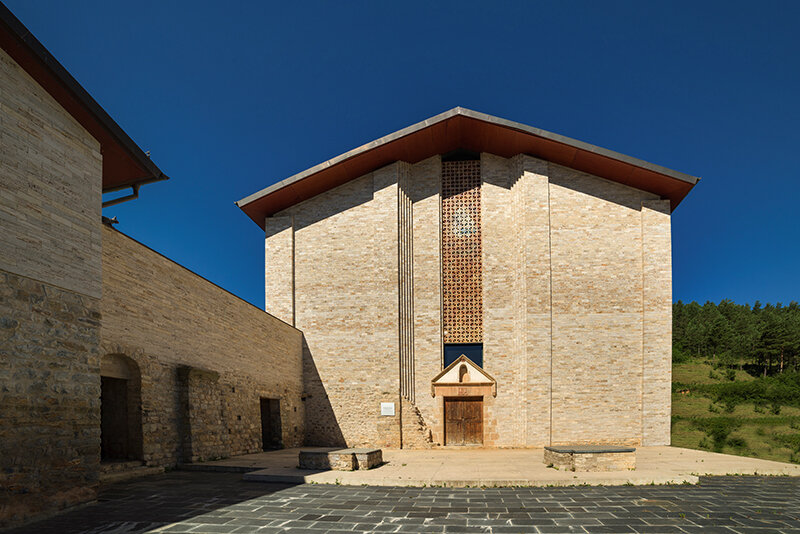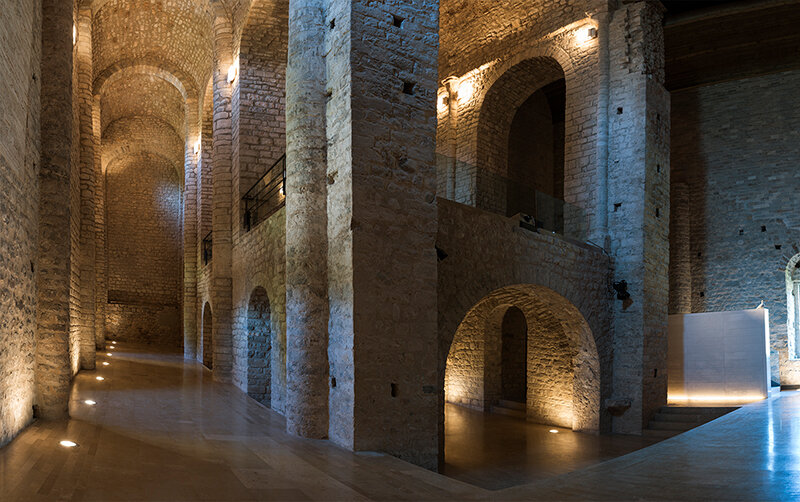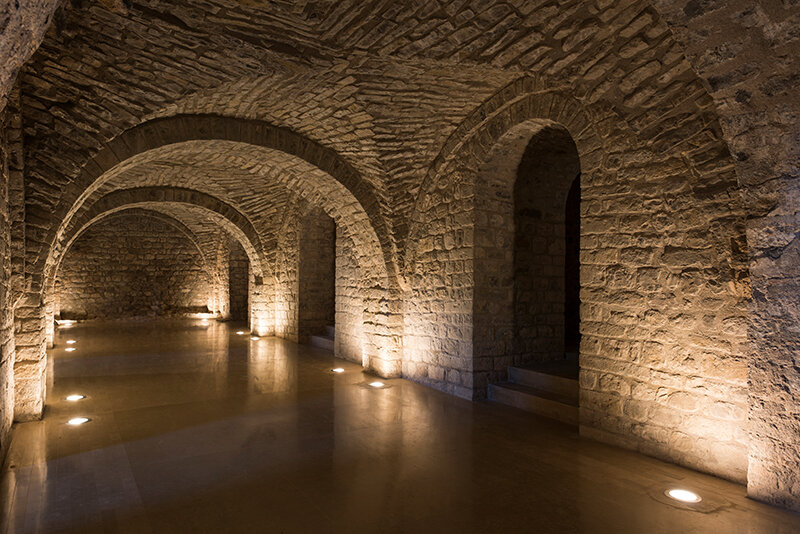Sant Llorenç Monastery
The monastery gets involved in the reconstruction of Europe, it is a nucleus of influence for what is going to be the Berguedà afterwards, it disappears during a deep earthquake, it is rediscovered underground by a priest and some children, it is architecturally reinvented and now it is a reference centre for culture outside the commercial circuit
A monastery with a so fascinating as unknown history in Guardiola de Berguedà. It keeps the charm of silence and the stubborn will of sharing the creative sense for community and personal life. It is one of the monasteries of the new Romanesque civilization that were born in Catalonia and now it mobilizes culture in our changing times to rethink and launch the new high civilization that we need.
History
This place was probably a sacred Indo- European place surrounding the water that Romans kept. During VI century it takes in eremites that later organize themselves as a community of monks next to a little Visigothic church. This community becomes Benedictine near 800 and incorporates itself to the web of monasteries that come back to support Europe from Charlemagne who goes for roman citizenship as an imperial and territorial culture. Cluny is the monastery that leads this web.
The first documented donation is done to Sinaldus Abbot in 898. Before Guifré el Pilòs was one of its benefactors because it was the great monastery of the county of Cerdanya. During the first centuries donations were frequent and generous in country houses and vineyards.
The recognition of the present Carolingian/imperial church, built as one of the last architectural pieces of ancient roman provincial style on the river that flows from the mountains, is done in 983. The young Oliba attends to the event. He will become Ripoll Abbot and Vic bishop, he was one of the most advanced men of his age: It is sure that the monastery was built because it was one of the centres for the intelligence of Hispania brand, and a monastery near the family.
Sant Llorenç was remodelled during XI and XII centuries in Romanesque style, providing it with cannon laps, a double church for relics monks, and very Romanesque pictures as we still can see in the south apse of Pedret that the monastery shows in a reliable copy. From XIII century the monastery declines due to the different plagues and few monks, and in 1428 the great earthquake of Pirineu destroys it: At the end of XVII a kind ok little Romanesque/romantic church remains, luckily, the ruins disappear buried under a big layer of land.
Sant Llorenç monastic life declined till 1836, when his last monk died, Martí Gironella.
It was dug up by the Bartrina priest, who was its dean during the 60s, helped by the children and the youth of the village, and it is reinvented with skill, with a contemporary architectural style, by Barcelona council.
©Joan Horrit Viladomat
Now it is a cultural territorial centre that presents a creative and collaborative programming of small format proposals and great closeness, drawn up and presented from de memory that OPENS HORIZON, an agora where things happen and they are shared as an experience from Easter till the beginning of October, every weekend
Guided tours timetable
Saturdays, Sundays and festivities, 10, 11 and 12h, till al 21 de December of 2025.
Other opened days 2025:
- April 17
- May 2
- June 23
- August 7, 14, 21 and 28
- September 12
During this timetable it is not necessary to book, you can go directly to the Romanesque place.
Closed from 25th December to 5th April.
There are extraordinary visits during all the year.
Visits prices:
Ordinary entrance: 3 €.
Reduced entrance: 2 €.
Extraordinary entrances out of opening hours: minimum 40 €
Visits arranged outside these hours.
Arranged visits can be requested at info@civitascultura.org
Activities
The programming that we show from the seasonal festivals. Spring, Summer, Autumn and Christmas, takes into account the creations of Berguedà and all Catalonia, emphasizing on those that are beginning in arts, or groups that show proposals that ask about how we live and want to live, always choosing a direct handcrafted style of emotional quality and for sustainability. Exhibitions, theatre, installations, dance, music, musical soirees… mix to make Sant Llorenç the referential place for weekly culture that works for another civilization from below, with citizens.
Sant Llorenç is culture for future because since 2016 chooses putting citizens in the centre of patrimony rather than tourists, chatting, proposing, making the monastery a place for everybody that loves it: Sant Llorenç is people who has it as a reference for culture of everyday life and creative, vital transformation and in common.
Cultural programming 2025
Cultural programming Timetable
Consult the acts in part “Activities” in this web
Continue programming from Spring to September.
Saturday Evening 19 h.
Sundays June, July, August and middle September, 12.30 h, musical soirees
How to get there
Camí del monestir s/n.
08694 Guardiola de Berguedà,
Barcelona









